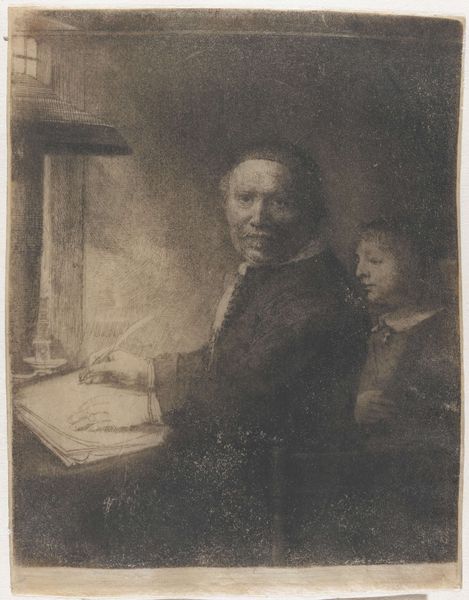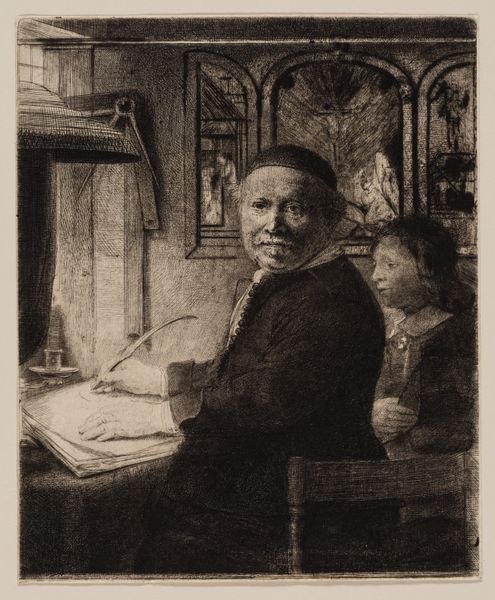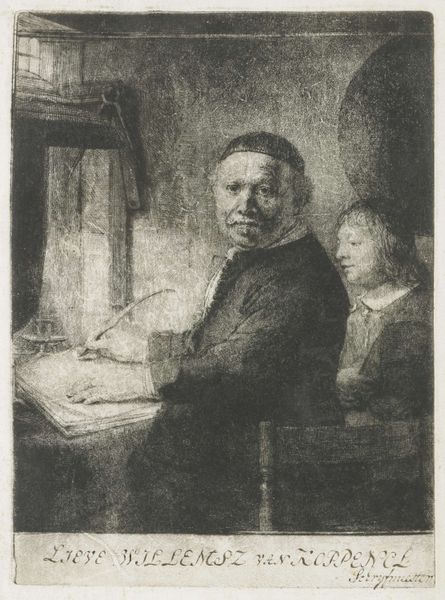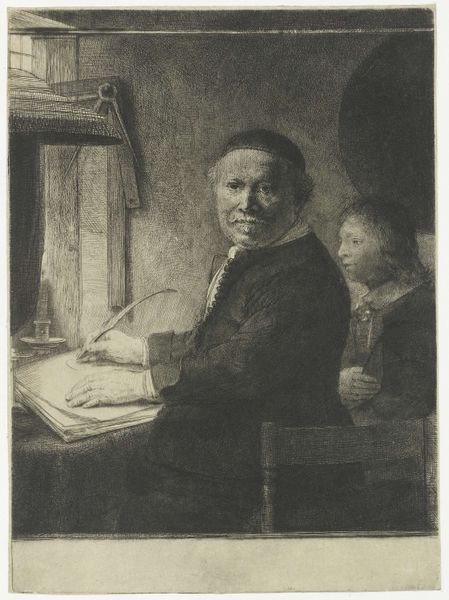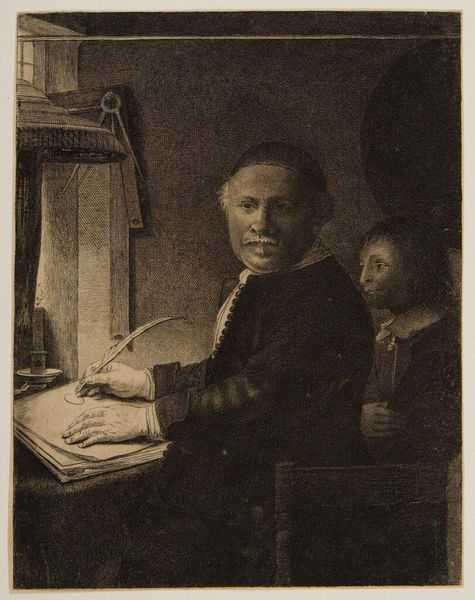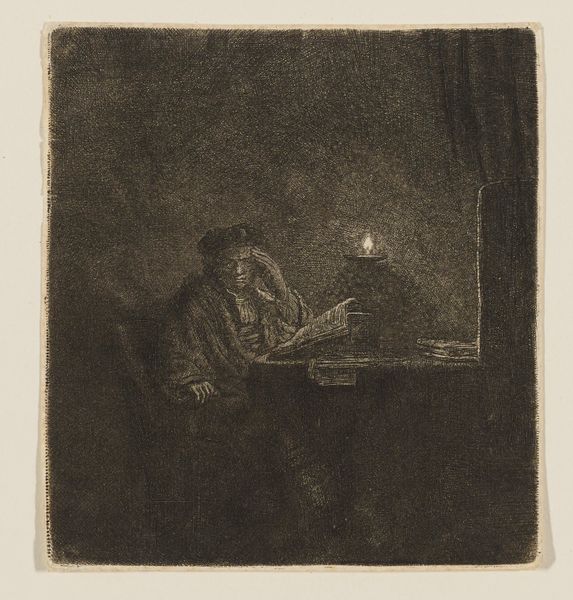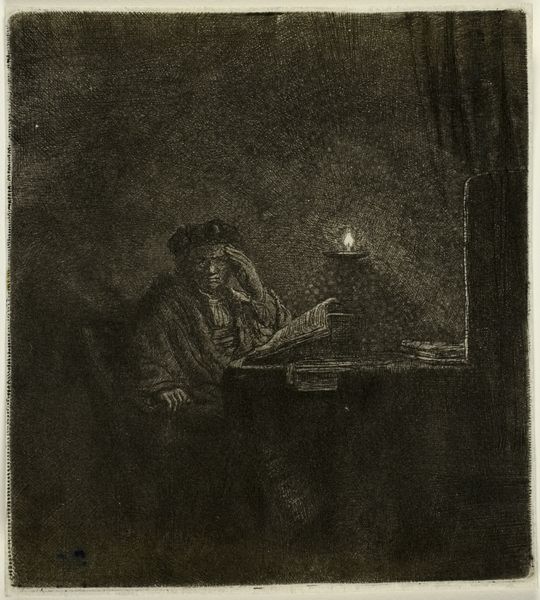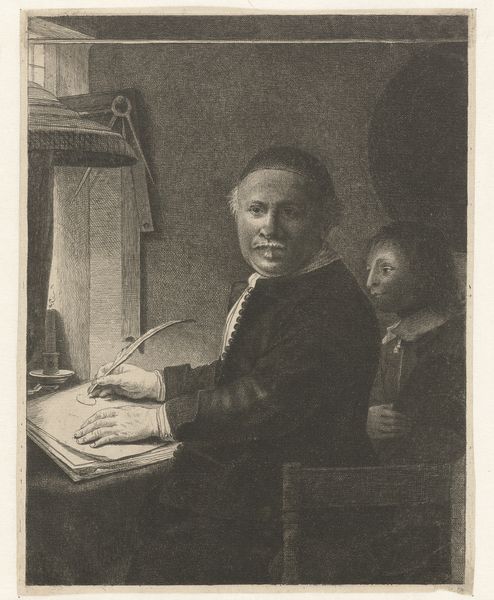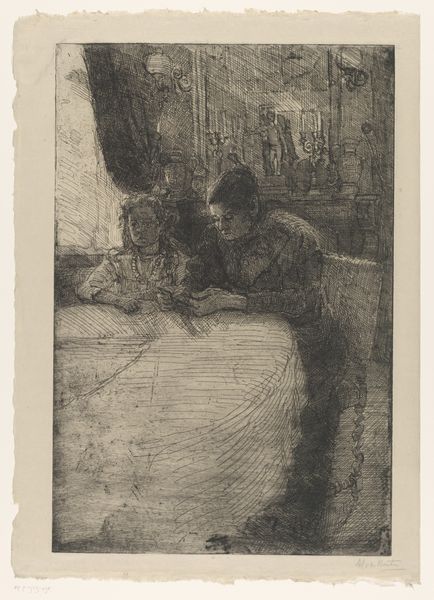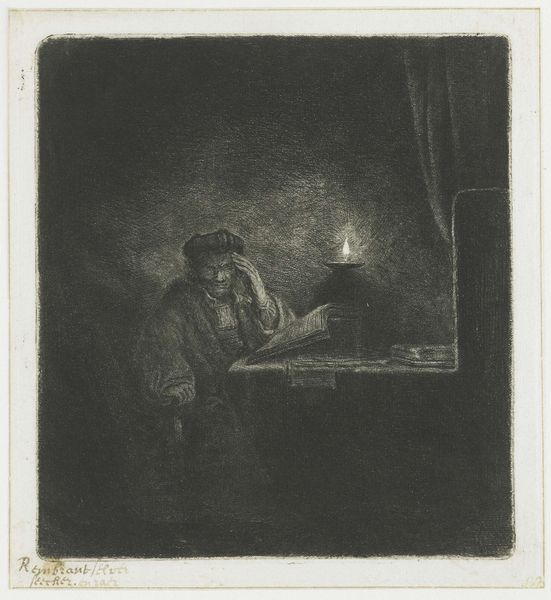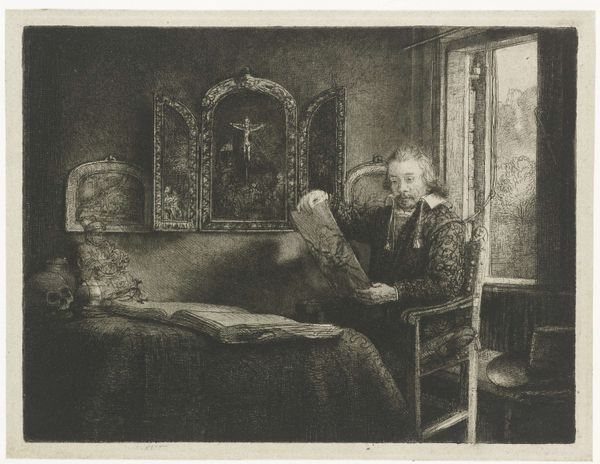
Lieven Willemsz. van Coppenol, writing master: the smaller plate c. 1658
0:00
0:00
drawing, print, etching, engraving
#
portrait
#
drawing
#
baroque
# print
#
etching
#
engraving
Dimensions: height 254 mm, width 184 mm
Copyright: Rijks Museum: Open Domain
Curator: What a brooding image. It almost feels like we’re intruding on a very private moment. Editor: Indeed. Here we have Rembrandt van Rijn's "Lieven Willemsz. van Coppenol, writing master: the smaller plate," dating back to around 1658. It’s currently held in the Rijksmuseum. It's an etching and engraving, and exemplifies Rembrandt's skill with printmaking. Curator: The lighting is intense. It emphasizes Coppenol's face, the book, the boy peering in... almost everything else dissolves into darkness. The way Rembrandt uses light is captivating—and dramatic. I find it difficult not to look for deeper symbolism at play in the shadows and subtle glimmers of illumination here. Editor: Consider the cultural significance of literacy during this period. The writing master held a prominent role in society; capable to spread information and to construct and control language. Coppenol, renowned for his elegant calligraphy, is immortalized here in a way that highlights not just his profession but also the socio-political power inherent in writing. Notice, too, the intimate portrayal—Rembrandt, also quite a skilled calligrapher himself, suggests that in addition to public persona, Coppenol possesses introspective thought and study. Curator: And how carefully his features are rendered. I immediately perceive intelligence in that face, but also weariness perhaps, or determination. His work probably absorbed the hours. I also note the figure just behind him, nearly swallowed by the shadows. He’s present, a clear aspect of the composition, yet also obscured. Editor: That boy also seems to be a popular point of contention; is he the student, the apprentice, the child of the scribe or something else entirely? His proximity suggests mentorship, perhaps even the transfer of knowledge across generations; his subtle position, that language continues through history as much as it guides its own course. Curator: Yes. These repeated shapes—book and face; candle and child; window and page—feel less like the everyday moments and more like an image dense with cultural information that requires unlocking. I read tradition as well as personality within the print. Editor: So a testament to cultural shifts embedded in this image, and captured through Rembrandt’s intricate etching technique. Thank you. Curator: An entirely evocative perspective. It offers much to consider.
Comments
No comments
Be the first to comment and join the conversation on the ultimate creative platform.
